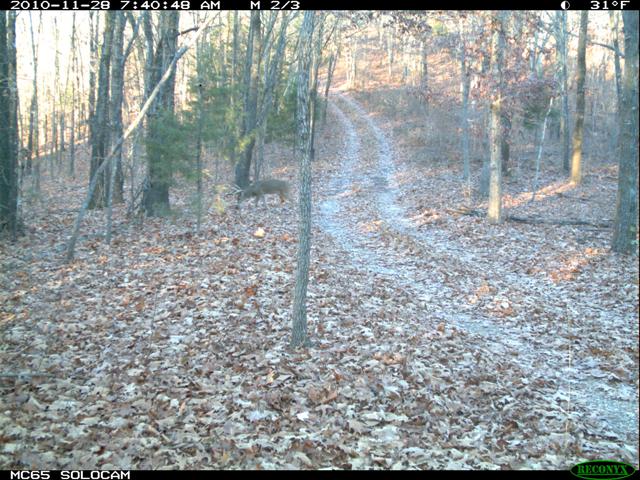Hunting The Second Chase Phase of the Rut
Filed under: Deer Hunting, Hunting Blog
Last week I wrote about the lockdown phase of the rut. That phase of the rut can be some tough hunting as mature bucks don’t travel much except when finished tending one doe and seeking another receptive doe. Does tend to remain receptive (in heat) for approximately 24-36 hours.
However, during the next few days whitetails throughout most of their range will enter the second chase phase of the 2011 rut. This occurs when most of the does have been bred and bucks are seeking a receptive doe after a few weeks of finding such a doe almost daily. A huge factor in the length of the lockdown phase at any location is the adult sex ratio.

Buck during second chase phase of the rut
If the adult sex ratio favors does, then bucks don’t have to search as much or compete for receptive does. Some does won’t be bred during their first receptive cycle and will become receptive again in approximately 28 days. Often the phases of the rut in these herds are not well defined.
If the adult sex ratio favors bucks (can be accomplished in herds where more does are harvested than mature bucks), then the lockdown phase usually only lasts about two weeks and there is intense competition for the receptive does. The second chase phase in such herds can be almost as good as the pre breeding chase phase.
There are two factors that dampen the second chase phase. The first is some of the bucks have been killed by hunters, predators, suffered injuries from fighting, etc. There are simply less bucks to harvest during the second chase phase compared to the first.
The other factor is that bucks have now been pressured for several weeks. They are proven skilled at avoiding hunters if they are alive during the second chase phase. These bucks are not easy to pattern or kill.
However, there are some advantages to hunting the second chase phase. There is usually less food available during the second chase phase. Hence, identifying the food source is easier than during the early fall. Likewise the days are usually colder and deer need more calories. Therefore, they will spend more time feeding each day. This is when quality late winter season food plots can be great stand locations!
I’ll be using my Reconyx trail cameras to see which bucks on my hit list are still alive, and which food plots the does are using. Then, I’ll hunt the travel corridors or the actual plots that deer are feeding in frequently in an effort to tag another mature buck this year.
My strategy for the chase phase led to the harvest of Clean 12. I look forward to seeing if this strategy leads to the harvest of another mature buck.
Growing (and hunting) Deer together,
Grant



